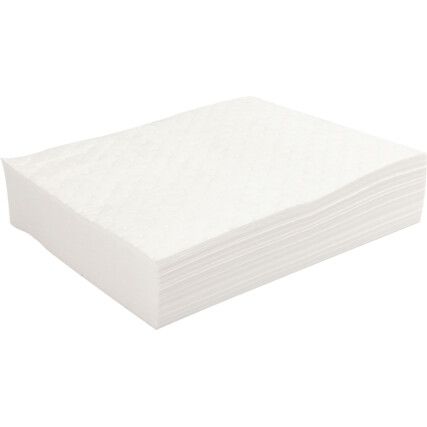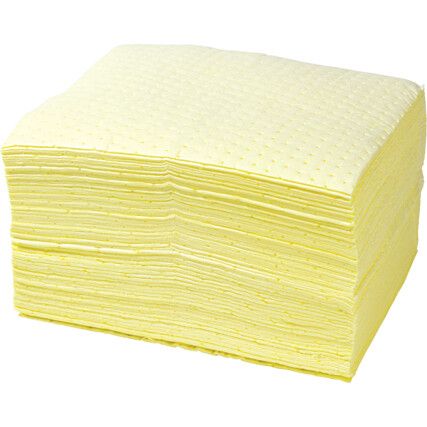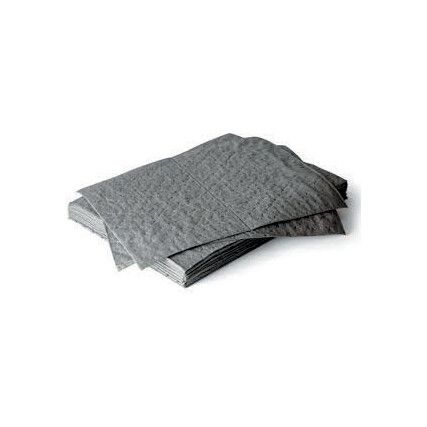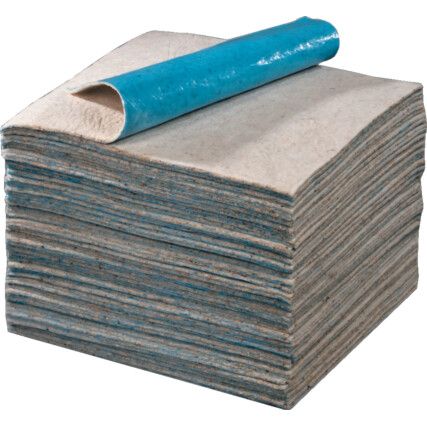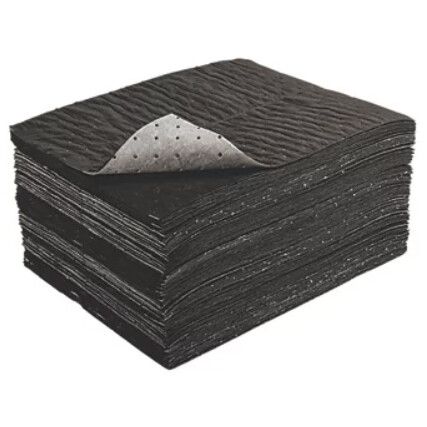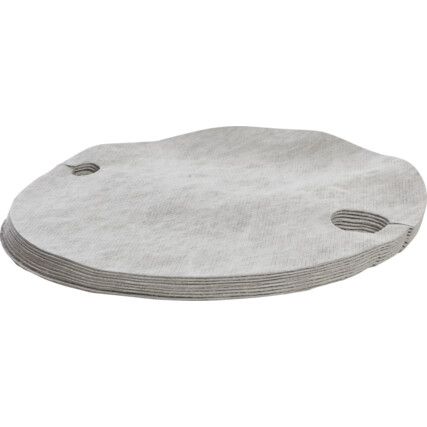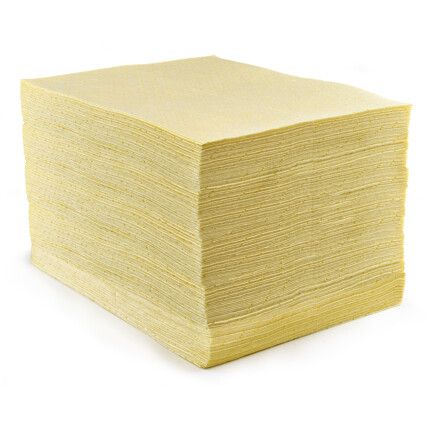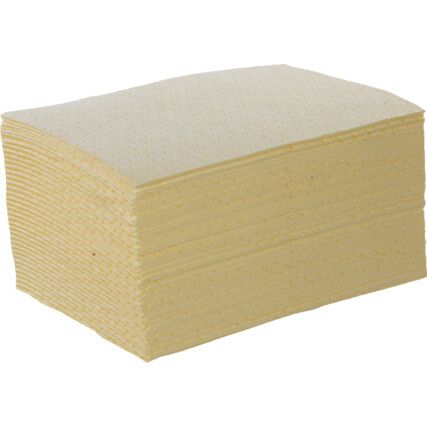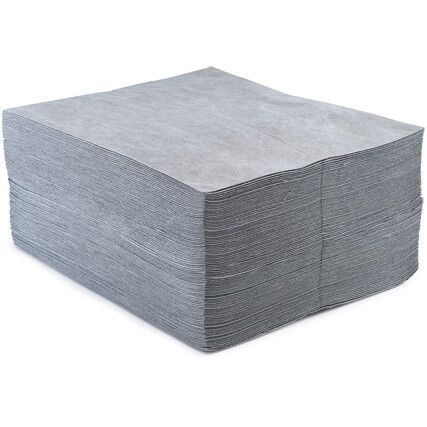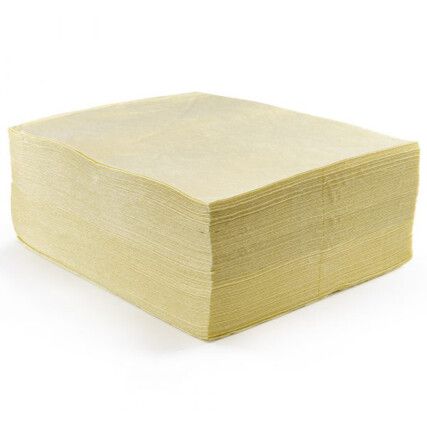Absorbent Pads & Mats
Absorb and retain spills with absorbent pads. Available in three variations, this type of spill control is designed for slow moving or stationary spills or leaks and can be stacked or folded as required. Cromwell stocks a wide range of absorbent pads of different sizes and absorbent capacities to suit your needs. We source our stock from reputable brands, like Ecospill® and our own brand, Solent®. For further information on Spill Control products, find more in our Spill Control Expert Guide.
What are absorbent pads?
Absorbent pads are designed to effectively soak up and retain small to medium spillages. They're made from materials specific to the spill type, for example, chemical pads tend to be made with sonic bonded layers of Polypropylene, which is a chemically resistant absorbent material.
These pads absorb potentially hazardous liquids and prevent the contamination of waterways and other bodies of water to help protect the environment from pollution.
Why absorbent pads?
Any business whose operations include pollution risks are obligated to have emergency spill kits on site. Spillages in the workplace pose a risk, not only to staff but also to the surrounding environment, including aquatic life.
Absorbent pads are quick and easy to apply. They're versatile and can be folded or shaped around leaking pipes or placed under machinery to catch oil leaks before they make contact with surfaces. Extremely durable and mostly low-linting, they're an ideal choice for production and distribution settings to tackle small to medium-sized spillages.
The DEFRA Control of Pollution (Oil Storage) Regulations 2001 and the Environment Agency's Pollution Prevention Guideline 26 (section 7: Dealing with Spillages) lays out guidance and legislation for dealing with emergency spills as part of business safety management systems. This includes the use of containment and absorption to prevent spills from spreading to other areas.
When are absorbent pads used?
Suitable for small to medium spillages, the liquid must be either slow moving or stationary on a flat surface for absorbent pads to be effective.
Fast moving spills that risk polluting waterways should be contained using absorbent booms alongside absorbent cushions and pads to ensure all the liquid is retained. Absorbent granules can be used after the main bulk of the spill has been tidied up to ensure complete recovery of the liquid.
Types of absorbent pads
There are three types of absorbent pads to suit different spillage requirements.
Chemical absorbents are yellow in colour and intended for the clean-up of chemical spills. They're extremely durable and can easily tackle aggressive chemicals, including acids and caustic liquids. They're a versatile pad and can also be used on water-based liquids and oil spills if necessary.
For oils including fuels, solvents and all derivatives of hydrocarbons, oil-only pads are manufactured from hydrophobic materials. This allows them to be used both on land and in the water to absorb oils (both vegetable and mineral).
Maintenance pads absorb both oil and water-based liquids, including everyday kitchen spills, coolants and cleaning chemicals. They are made from hydrophilic materials, which have excellent retention properties, and are often used on tabletops when working with oily parts as a spill preventative.
Considerations when choosing absorbent pads
• Business size - This determines the number of and capacity of absorbent pads you'll need.
• Spill liquid - The liquids and chemicals handled on your site will dictate which type of pads will be required.
• Legislation - Check your compliance requirements with a risk assessment.
• Absorbent capacity - What size spillages might you be dealing with?
Absorbent pad jargon buster
We want to make it easy for you, so here are some key terms that will help you understand the range and applications a little better.
What does the safety standard BS 7959 mean?
BS 7959 is not as complicated to understand as it first appears and is relevant to the absorbent materials used for the control of liquid spillages.
Let's break it down...
• BS - This is the acronym for British Standards.
• 7959 - This is the assigned legislation number.
• 1 - This refers to the part of the written legislation relevant to the product, in this case, the sorbency (strength of absorption) of the materials (sorbents) used to control liquid spillages
• 2 - the determination of water repellence or buoyancy of hydrophobic (oil-only) absorbents
FAQs
What is an oil absorbent pad made of?
Oil-only absorbent pads are made of oleophilic and hydrophobic polymers that repel water while attracting oil. They're lighter than water and can easily float on the surface of a stream or lake to absorb oil contaminants.
How do you dispose of absorbent pads?
Used absorbent pads must be disposed of in accordance with the absorbed liquid destruction regulation.
What does sorbent mean?
A sorbent is any ingredient used to absorb or adsorb a spillage.
What's the difference between absorb and adsorb?
To absorb is where one material soaks up another to combine. To adsorb is where one material sticks to the surface of another material, with both materials remaining separate.
How do absorbent pads work?
When placed onto a spillage, the bonded layers of sorbent absorb the liquid and retain it to the pad's capacity. The bonding process makes the pads extremely durable, so they don't rip when wet and make for easy clean up.
